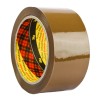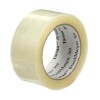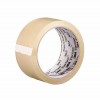What is silicone paper and what is it used for?
What is silicone paper used for? To make sure you’re always choosing the perfect adhesive tape for your needs you need to know the characteristics of the product itself. It is a well-known fact that each kind of adhesive tape has different peculiarities.
There are tapes with a greater or lesser adhesive capacity, as well as tapes that can be easily removed without leaving residue, whereas others can be quite a pain for those who wish to erase any trace of adhesive left behind.
Other tapes can be unrolled quietly, while other rolls may be very noisy. And yet, there are tapes designed exclusively for masking, tapes to be used for electrical wire isolation, adhesive tapes meant to permanently set carpets in place, tapes capable of withstanding very high and very low temperatures, and so on.
So, it is necessary to understand what distinguishes these products from one another, starting with the understanding of the materials which they are made of.
A term you might encounter in the description of adhesive media could, for example, be “silicone paper”: what is it, and what is it used for?
What is silicone paper?
Technically, silicone paper is a special type of wrapping, which is very valuable, especially so because of its most special feature: it is an anti-adhesive material.
And yes, when working with adhesive materials, it is extremely useful in many cases to be able to rely on surfaces that are – almost – immune to their power. In fact, silicone paper is part of this group, presenting a surface on which industrial double-sided adhesives can not make permanent grip, and on which, moreover, no glue residue can be left.
This means that, if one was to attach duct tape or masking tape to silicone paper, it would be very easy to remove the tape without leaving any trace behind.
The material has this name because on one of its two sides – or, in some cases, both – an organic silicon layer is applied, or in any case a material having the same anti-adhesive characteristics of silicone.
For example, silicone paper is widely used in the field of restoration, when it is necessary to apply pressure on surfaces which have previously been treated with adhesive substances: putting silicone paper between the surface in question and the object generating pressure will be sure to eliminate any adhesive risk.
From this description it is already easy to understand how useful silicone paper can be in the world of adhesive tapes. In this sector, however, the more precise term would be liner.
What is silicone paper used for in adhesive and double-sided tapes?
In the field of adhesive tapes, silicone paper is generally referred to with the term liner. More precisely, liner is a protective film which can have several levels of thickness, and which is placed in contact with the adhesive part of a tape, to protect it and make it easier to use.
The typical product in which it is possible to find a liner is, for example, double-sided adhesive tape, which is characterized, unlike normal adhesive tapes, by a double surface with a layer of adhesive substances.
Liner is then placed along one of the two surfaces, in order to prevent adhesion from tape at the time of packaging the roll and to make it easier to use the strong double-sided tape itself.
Those who use it can, in fact, unroll the tape as if it were normal industrial double-sided adhesive tape, apply the segment they need on the surface being processed and, only then, remove the silicone paper liner to “activate” the second adhesive side as well.
Types of liner
There are different types of liner. There is the classic silicone paper liner, as well as plastic liners, which are often referred to by the term film; in this second case, they are liners made with polyethylene or polyester.
Liner’s thickness can be larger or smaller, depending on the type of processing which the tape will face. In the case of already quite big tapes, it is possible to opt for a thinner liner, to avoid having to deal with excessively large rolls.
In the case of double-sided adhesive tapes, however, it is possible to choose a liner with a greater thickness, making it even easier the use of the tape itself, as gripping the flap to be unrolled will be even easier.







